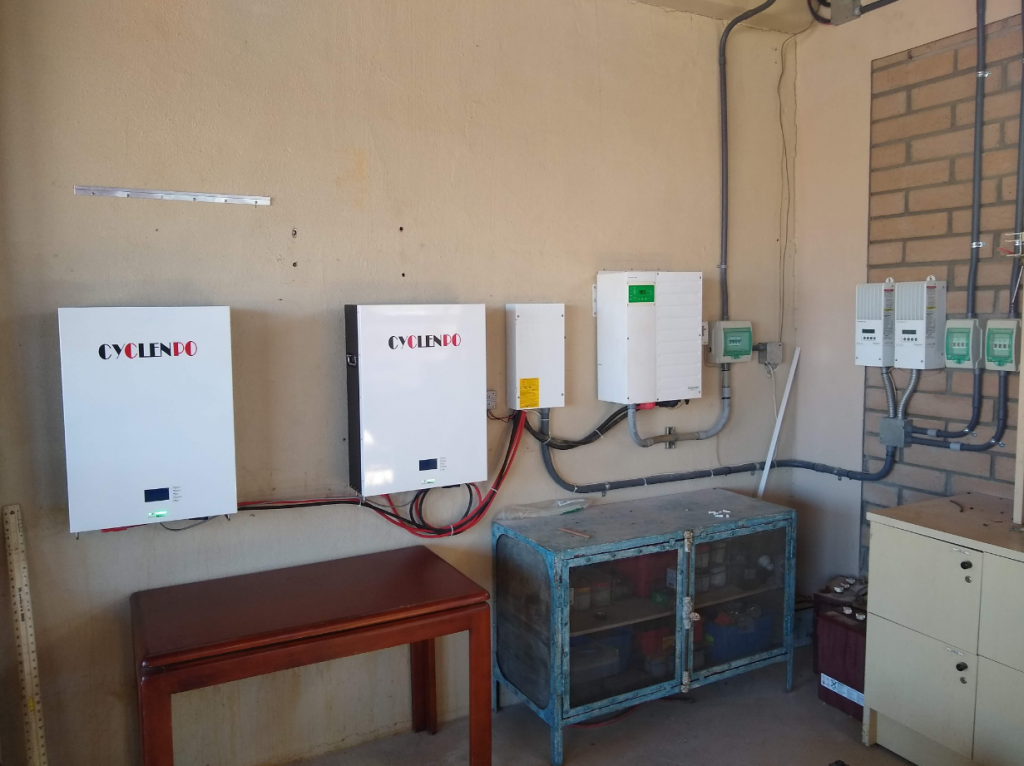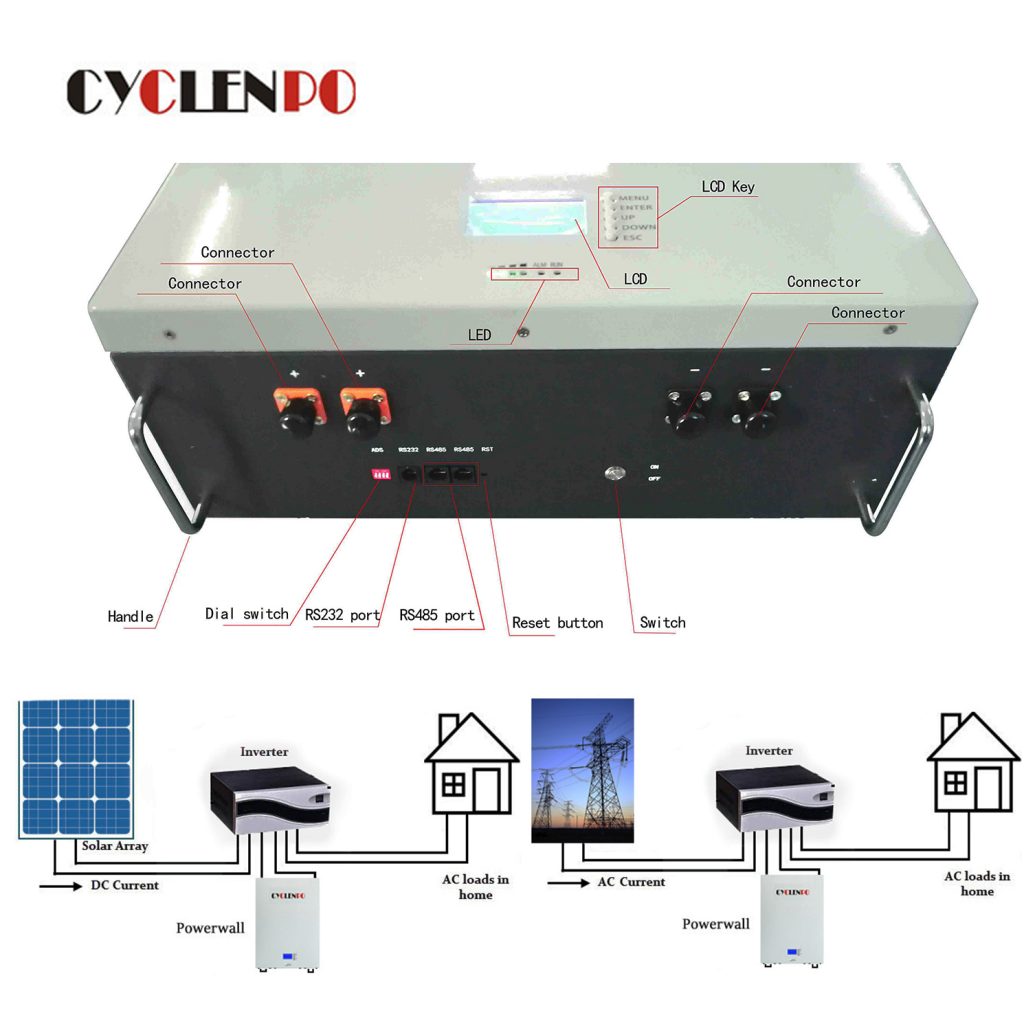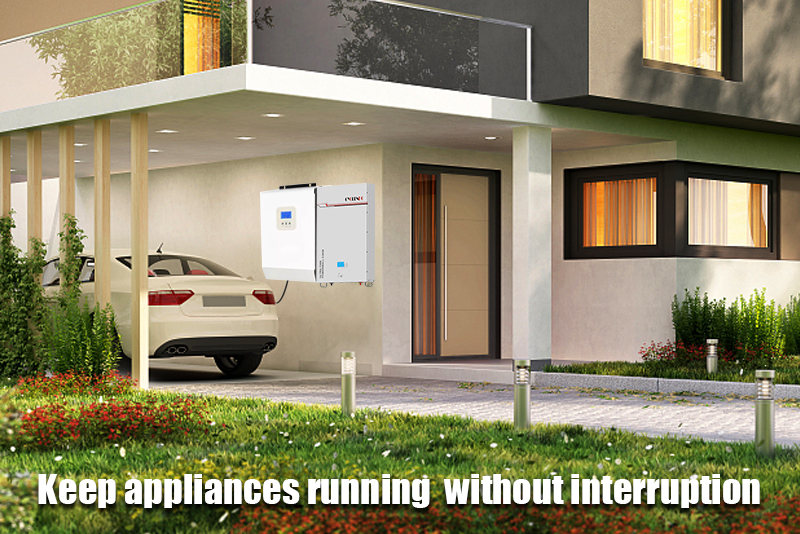The off-grid photovoltaic power generation system has become an independent photovoltaic power generation system, which is mainly composed of PV modules, DC/DC charge controllers, off-grid inverters and loads.
The off-grid system consists of the following parts
Battery components, photovoltaic charge and discharge controllers, battery packs, off-grid inverters, AC/DC loads. The main function of the photovoltaic charge and discharge controller is to control the charging and discharging of the battery, and to protect the battery from overcharging and discharging. Off-grid inverter, the function of off-grid inverter is to convert DC power into AC power and provide it to the load.
Our common off-grid energy storage system is solar street lights. Photovoltaic modules, a controller the size of a cigarette box, a tens of watts of LED lights, and one or more batteries can provide night lighting. A larger off-grid energy storage system is a "household system". A household system is about 300W, with 2 battery panels, a control inverter integrated machine, and 2-4 12V100AH batteries. Watching LCD TV and LED lighting at night can also use some small motors.

The energy storage power station (system) mainly cooperates with the application of photovoltaic grid-connected power generation. Therefore, the entire system includes photovoltaic module arrays, photovoltaic controllers, battery packs, battery management systems (BMS), inverters, and corresponding joint control and scheduling of energy storage power stations. system, etc., including power generation systems. The photovoltaic module display uses the photovoltaic effect of the solar panel to convert light energy into electrical energy, then charges the lithium battery pack, and converts direct current into alternating current through the inverter to supply power to the load. The intelligent controller continuously switches and adjusts the working state of the battery pack according to the changes in the intensity of sunlight and the load. On the one hand, the adjusted electric energy is directly sent to the DC or AC load. On the other hand, the excess electric energy is sent to the battery pack for storage. When the power generation cannot meet the needs of the load, the controller sends the electric energy of the battery to the load, ensuring the continuity and stability of the entire system. The grid-connected inverter system consists of several inverters, which convert the DC power in the battery into standard 380V mains power, which is connected to the low-voltage power grid on the user side or sent to the high-voltage power grid through a step-up transformer. The lithium battery pack plays two roles of energy regulation and load balance in the system at the same time. It converts the electrical energy output by the photovoltaic power generation system into chemical energy and stores it for use when the power supply is insufficient.

As an energy storage power station that cooperates with photovoltaic power generation access, realizes peak shaving and valley filling, load compensation, and improves power quality, energy storage batteries are a very important component, and must meet the following requirements: easy to achieve multi-mode combination, and meet higher requirements Working voltage and maximum working current. The detectable and diagnosable battery capacity and performance enable the control system to realize the dispatch control of the power station load under the condition of predicting the battery capacity and performance. High security and reliability. Under normal use conditions, the normal service life of the battery is not less than 15 years. Under extreme conditions, even if a failure occurs, it is within the control range. There should be no explosion, combustion and other failures that endanger the safe operation of the power station. It has good fast response and high rate charge and discharge capacity, and generally requires 5-10 times charge and discharge capacity. High charge-discharge conversion rate, easy installation and maintenance, good environmental adaptability, and wide operating temperature range.

In energy storage power stations, energy storage batteries are often composed of dozens or even hundreds of strings of battery packs. Due to the inconsistency of battery internal resistance, voltage, capacity and other parameters during the production process and use process of the battery. This difference is manifested as the difference in voltage or energy between the cells in series when the battery pack is fully charged or discharged. This situation will lead to partial overcharging, and the battery cells with too low voltage may be over-discharged during the discharge process, so that the discreteness of the battery pack will increase significantly, and overcharging and over-discharging are more likely to occur during use. The capacity of the entire battery pack is shown to be the capacity of the worst performing cell in the battery pack, which eventually leads to premature failure of the battery pack.
Therefore, for lithium iron phosphate battery packs, a balanced protection circuit is necessary. Of course, the battery management system of lithium batteries is not only the balanced protection of batteries, but also more requirements to ensure the stable and reliable operation of lithium battery energy storage systems.